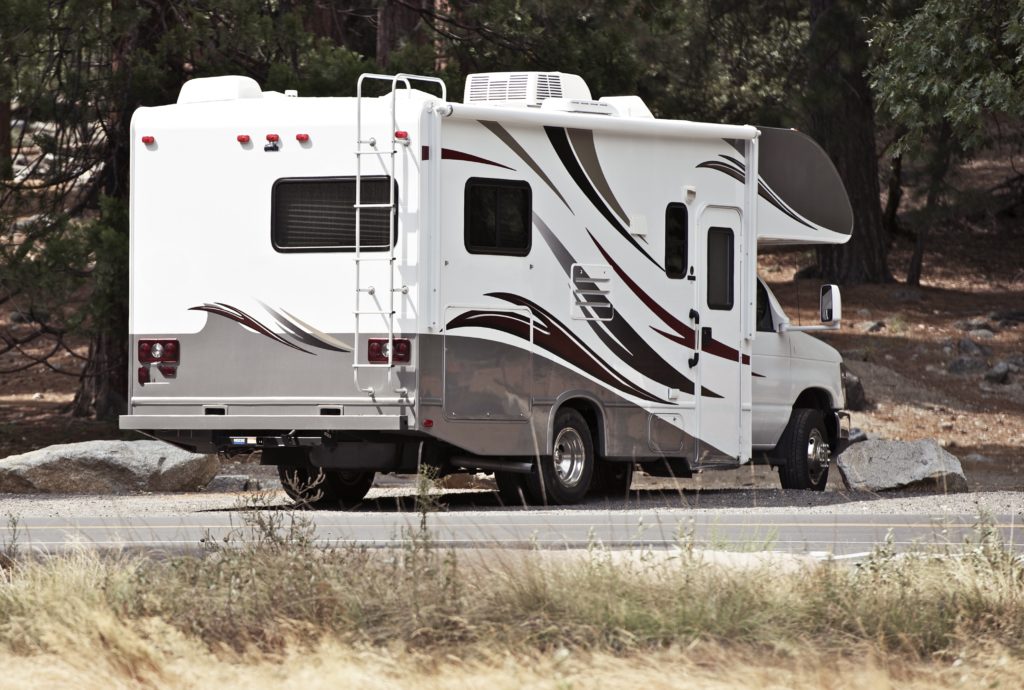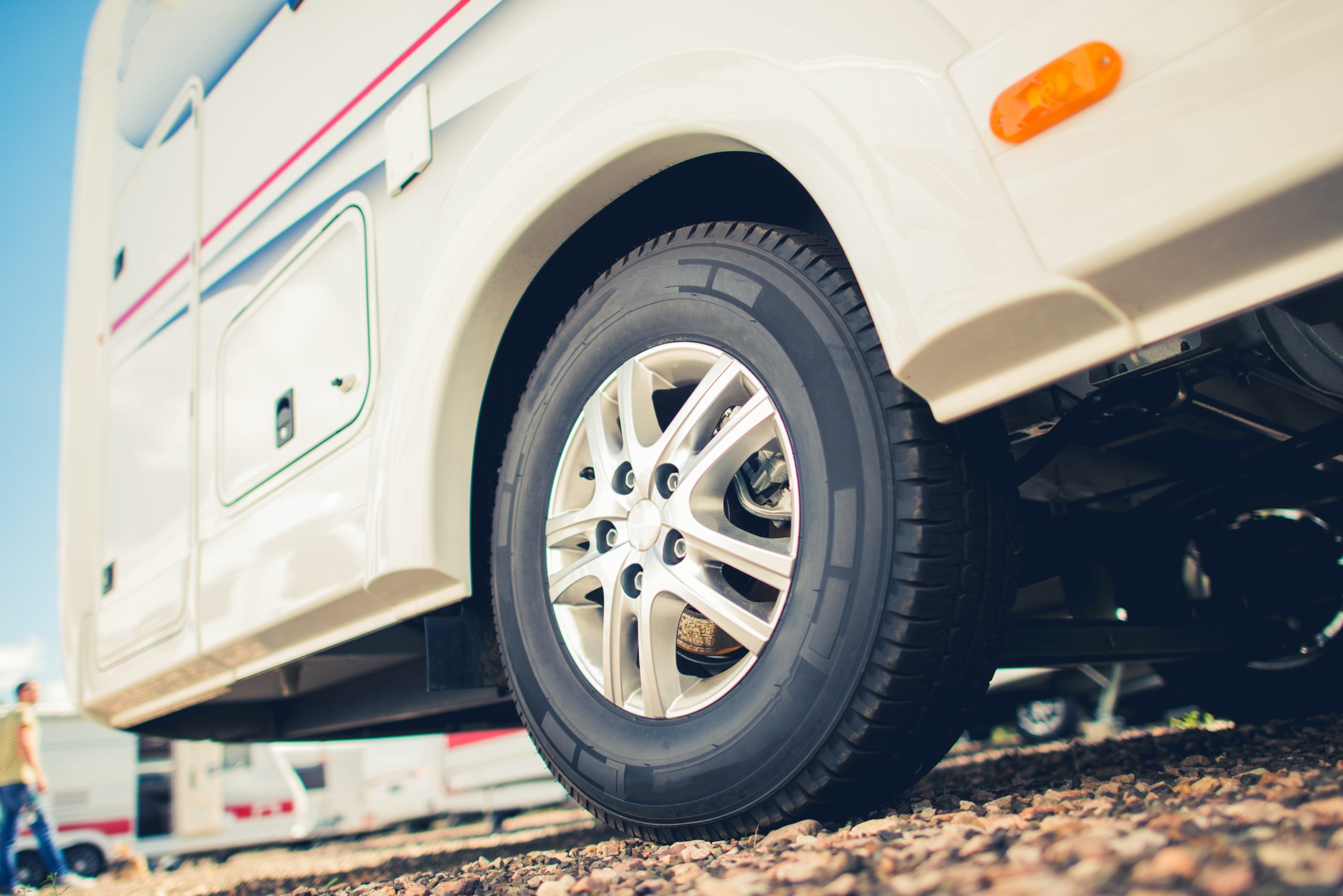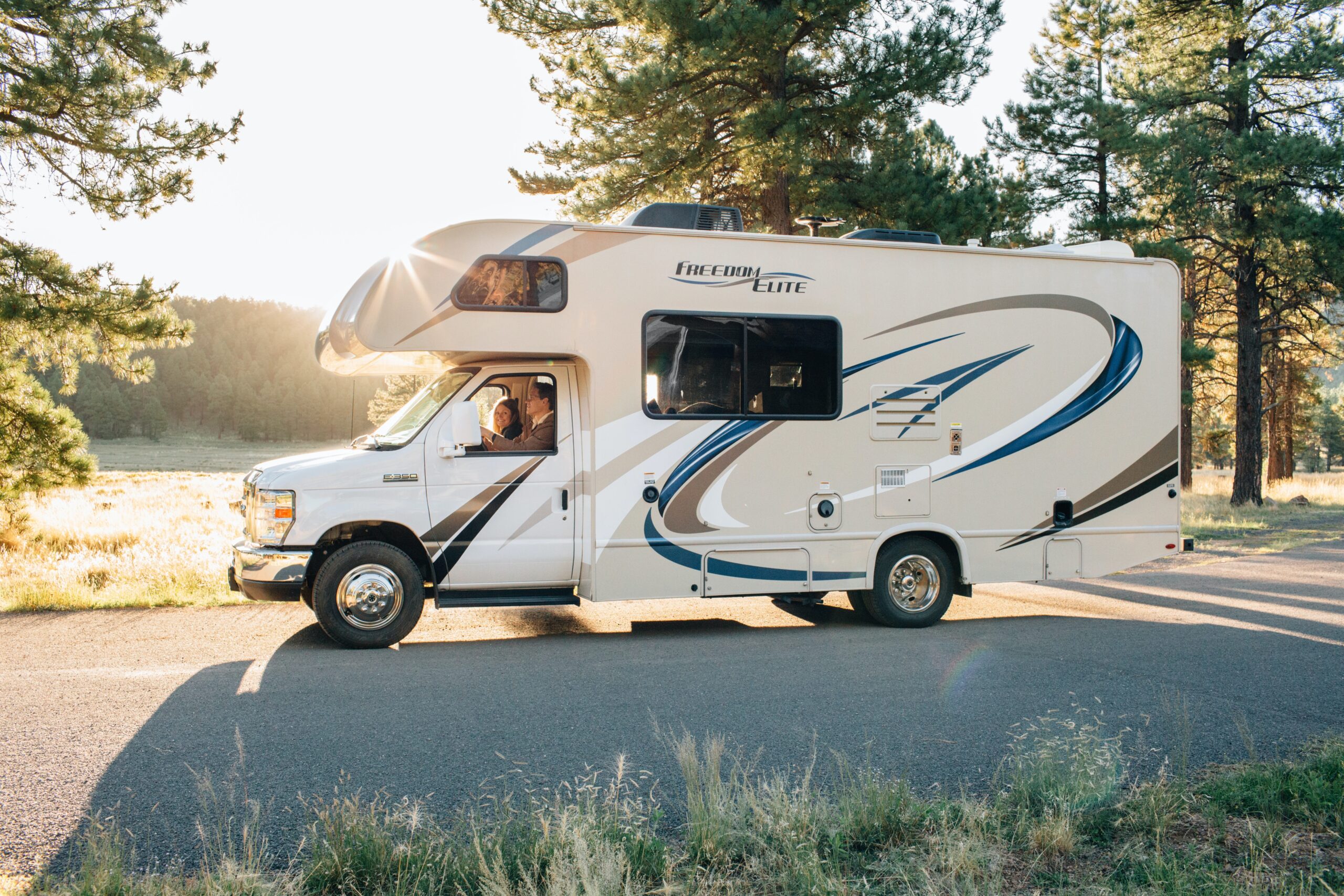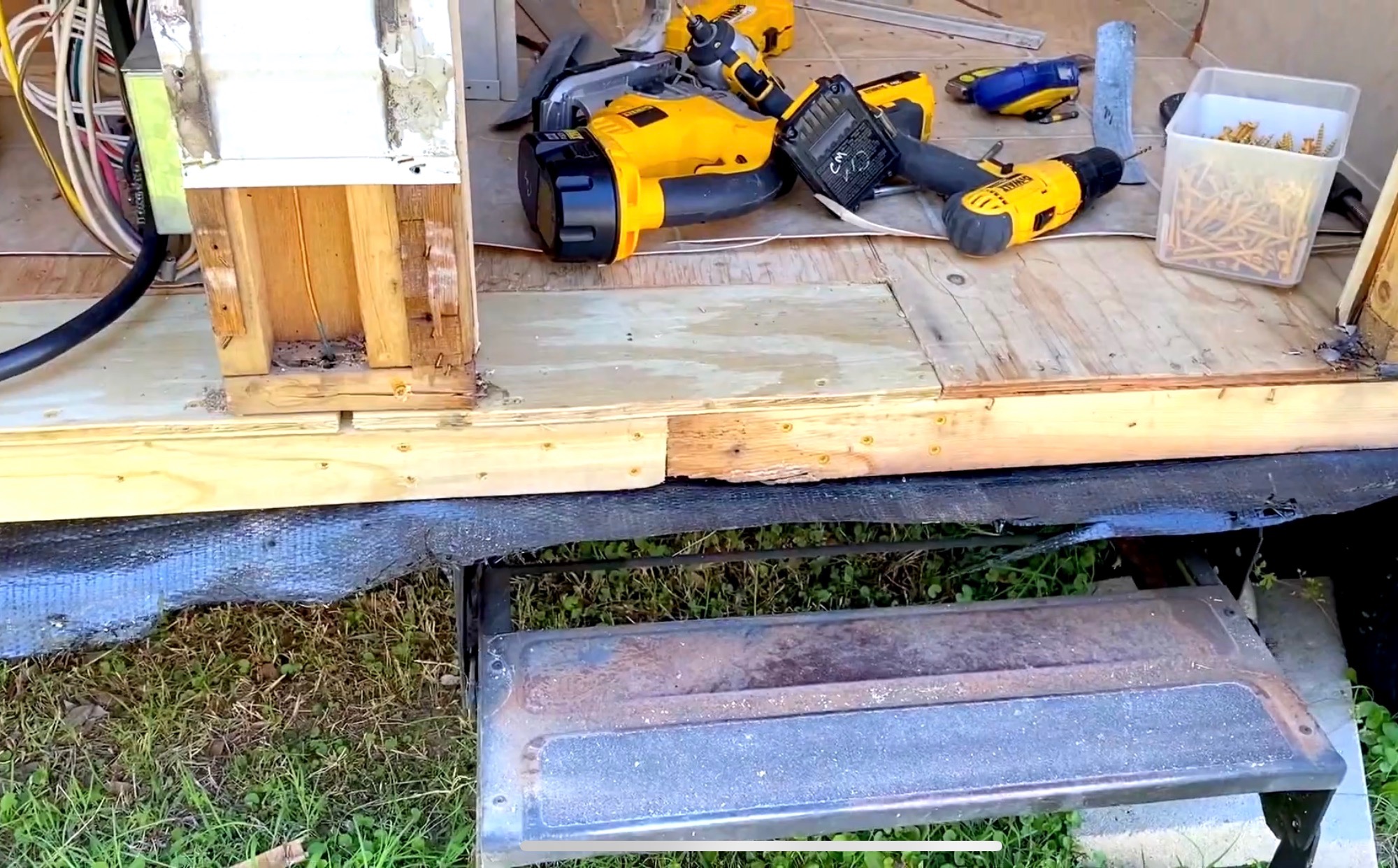So, can you use truck tires on an RV?
You can use truck tires on an RV, but it depends on both the type of RV and the type of truck tires. Trailer tires (ST) have a higher load capacity and sidewalls designed to stop trailers from swaying. If you drive a motorhome RV, then commercial truck tires may well be the best tires for you.
In this article, we’ll be diving into the world of RV tires to find out what the difference between truck tires and RV tires is, whether they are interchangeable, and what the best tires are for your RV.
It is worth noting right at the start that using the wrong tires can be dangerous since weak tires can overheat and blow out on the road. Let’s get stuck in!
Get the Right Tires for the Job
There are many different types of RVs and many different types of tires. If your RV is a trailer, you will need different tires than if your RV is a motorhome.
RVs also come in many different sizes, often with different wheel sizes. The point here is that you will have to tailor which tires you buy to which kind of RV you drive and the size of the RV.
There is no type of tire that will suit all RVs.
There are many different types of RV, and different types may need different tires.
A class B RV, for example, is small enough that LT tires will do just fine! If you use a ‘fifth wheel’ trailer RV, however, it may be a good idea to use ST tires for stability due to the large size.
If in doubt, check with either the RV manufacturer or a tire specialist before fitting tires to your motorhome.
Tires that are too weak are likely to overheat and even blow out.
ST vs. LT
This is perhaps one of the most controversial areas in the world of RV tires.
ST stands for special trailer tires, which are tires designed for use in a towed trailer.
On the other hand, LT stands for ‘light truck’ tires designed to be used on SUVs, vans, and other light trucks.
These two types of tires are pretty similar.
It might not be ideal, but it is probably fine to use LT tires on most trailer RVs.
One of the major differences is the sidewalls. ST tires have much more rigid sidewalls, which allow the trailer to maintain stability when cornering.
Another difference is the load capacity, with trailer tires being able to carry significantly more weight.
However, that comes at a cost: the speed rating for ST tires is much lower. Most ST tires should never be used at speeds of more than 65mph at full inflation, or you risk overheating the tires and having a blowout.
RV Classes
If you drive an RV, you probably already know that they are separated into class A, class B, and class C. You will need to buy different tires based on which class your vehicle falls into.
Class A tires, which are the largest available, will support between 15,000 and 30,000 pounds and are recommended for RVs up to 40ft long.
Class B, the smallest available, will support between 6,000 and 8,000 pounds of weight on an RV between 17 and 19ft in length.
Finally, class C RV tires will support between 10,000 and 12,000 pounds of weight on an RV between 20 and 30ft in length.
Consult a specialist to find out more about RV tire size specifications and make sure that a particular set of tires will fit the model of your RV.
Reading Your Sidewalls

There is quite a lot of very useful information printed on the sidewalls of your tires, starting with whether the tires are LT or ST.
In this section, we’ll tell you what each of the numbers and letters means and shows you how to translate them into concrete information about your tires.
Speed Rating
The speed rating of a tire is how fast it can go at full inflation and maximum load without overheating. Together, the speed rating and the load index will be described shortly and form the service description.
The speed rating, the letter at the end of the service description, tells you how fast the tire can safely travel, although it is worth mentioning that things like weather, tire condition, and load will all affect how fast you can safely go.
The higher in the alphabet you go, the higher the top speed of the tire. For example, an R-rated tire can go up to 106mph in ideal conditions if the tire is inflated properly.
You have not exceeded the maximum allowable load capacity of the tires. You can find a full chart of speed ratings here from Les Schwab.
We will now show you how to figure out how much weight your RV can take without overheating the tires.
Load Range
Along with the manufacture date of the tire and the maximum pressure, both of which we will discuss later, you should see a letter between B and E on the sidewall, which will tell you the load range of the tire.
In order to find out what those numbers mean, you can check them against a chart which can be found here on Tread Wright.
The load range is an old measurement that tells you how many plies there are in the tire. This refers to how many layers of rubber and cord are built into the tire.
So, an E-rated tire has the equivalent strength of a 10-ply tire back in the day. However, it is a 1 or 2-ply tire that is as strong as a 10-ply.
This tells you the maximum inflation pressure of a tire, in this case, 80psi.
Load Index
The load index is one of the most important figures you need to know. You can find this out by looking at the sidewall of the tire.
This is the number that comes just before the letter, which tells you the tire’s speed rating.
The load index refers to how much weight an individual tire can carry when inflated to maximum pressure.
When you have found the load index rating, go to the website of your tire manufacturer or this page on Tire Rack to find out how much weight that translates to.
For example, a load rating of 120 means each tire can carry 3,086 pounds of weight.
Multiply that by the number of tires on your RV to find out the total maximum load your tires can handle.
However, that figure isn’t much use if you don’t know how much your RV actually weighs.
Weighing Your RV
Every RV has a sticker somewhere, usually on the inside of one of the cabinets, which will tell you the maximum cargo capacity of the RV itself.
That number indicates how much extra weight you can put in the RV in addition to the weight of the RV itself.
This is vital to know when choosing RV tires since an overloaded RV will generate much more heat in the tires, which will cause them to degrade or even blow out much more quickly than they would otherwise.
In fact, this is the number one most common cause of tire blowouts in RVs!
In order to weigh your RV, you will need access to a CAT (certified automotive truck) scale.
These can be found at most truck stops in the US, as well as at RV conventions and dealerships.
Make sure that you have loaded the RV with everything you plan to take on your trip in order to get an accurate reading of how much your RV weighs when fully loaded.
Yes, that includes the passengers you plan on taking.
So long as the combined load ratings of all your tires taken together are higher than the RV’s total weight with all the cargo on board, the tires should be fine to use on your RV.
However, it is a good idea to leave yourself about 5% leeway since tires deflate and degrade over time, and you do not want to risk having a blowout on the open road.
You should weigh each axel individually and redistribute the weight if only one of them is overloaded.
What Difference Does Your Tire Set-Up Make?

The main thing to look out for here is whether your tires are in a ‘dually’ or ‘non-dually’ setup. Some of the tires will be doubled up in a dually, with two tires side by side.
Running a dually setup decreases fuel economy, meaning that you get less bang for your buck when it comes to gas consumption. It can also decrease the load capacity.
That is because tire sidewalls bulge out when they are carrying a heavy load.
If your tires are side by side, that means they can start rubbing together when you are carrying a large weight at high speed.
When you see the load index rating on the sidewall of the tire, the first number will be the load index in a non-dually setup, and the second will be for a dually setup. For example, you might see 123/119N.
That means that in a non-dually setup, the tire can carry 3,417 pounds of weight. In a dually setup, however, it can only take 2,998 pounds.
You can find the load index in many different places online, including here. The ‘N’ at the end of the load index is the speed rating.
It means the tire can be used at speeds of up to 87mph when the RV is loaded to full capacity.
The Best Tires For an RV
While it is fine to use LT tires on an RV trailer, provided the load rating is greater than the total weight of the RV when fully loaded, ST tires will have a small advantage when it comes to towing a trailer.
This is down to the higher load range or index, which comes from thicker, more rigid sidewalls. Here are some of the best tires for an RV:
Goodyear Unisteel Radial G614 Tire: 235/85R16
No products found.
Despite being LT-rated, these are great all-around tires for towing an RV. With a load index rating of 126, these tires can carry a whopping 3,748 pounds each!
The speed rating is R, which means the tires can be used at a speed of 106mph at maximum inflation of 110 psi. Those are some seriously heavy-duty tires!
Because they are not ST-rated, you might feel a little sway when towing a trailer around corners.
The other drawback of these tires is the price. It can be up to $1,000 or more per tire, depending on the vendor.
For speed and load ratings like that, however, you were always bound to have to pay for the privilege.
These are exceptionally durable and heavy-duty tires that should last you for a long time if you take good care of them.
Again, make sure not to overload the tires with too much weight or they will wear out much more quickly!
Trailer King ST Radial Trailer Tire: 225/75R15
No products found.
At about half the price of the Goodyears, these are a great choice for the RVer on a budget. With a load rating of 117, these tires can take 2,833 pounds of weight each.
That should be well enough load capacity to take care of even a well-packed RV! The speed rating on these tires is L, which means they can go at speeds up to 75mph, which is very good for ST tires.
Most STs can only go at speeds of around 65mph.
These tires are great value for money. They are much higher quality than they have any right to be given the very affordable price tag.
Many customers who buy them say that these tires handle very smoothly on the road in addition to the high load capacity and speed rating.
That is important when you are dragging around a massive trailer.
Goodyear Endurance Performance Radial Tire: 235/80R16 123N
No products found.
Another ST tire, this one is an even better value than the Trailer Kings. With a speed rating of N (87mph), these tires give a smooth and stable ride at highway speeds.
The reinforced sidewalls also help to stop the trailer from swaying when turning a corner.
The price is hard to beat: these tires are available on Tire Rack for less than $200 per tire. Depending on the vendor, that could be less than a fifth of the price of the G614s.
These tires are highly rated when it comes to comfort and will give you a very smooth ride. The load rating on these tires is 123, which means that each tire can take 3,417 pounds of weight each.
That’s very good for such a cheap tire! The speed rating of N means that it can travel at speeds up to 87mph when fully inflated to its maximum pressure of 80psi.
Again, make sure not to overload the tires, or they can overheat and cause a blowout.
Michelin XPS RIB Truck Radial Tire: 235/85R16 120R
No products found.
These tires are known for excellent traction in both wet and dry conditions, although they leave something to be desired under winter conditions.
They also have great stability around corners when towing a trailer. They have a load index rating of 120, which, as you may know by now, translates to a carrying capacity of 3,086 pounds per tire in ideal conditions.
They have a speed rating of R, which means they can go at speeds of up to 106mph. That is an excellent rating for a tire with such high load capacity!
These tires are also known for their durability when it comes to tread degradation and puncture resistance. These tires are available on Tire Rack for less than $300 per tire.
For such a smooth and durable tire, that is an absolute steal.
Conclusion
Depending on the type of RV you are using, it is probably fine to use LT (truck) tires.
A larger towable RV like a fifth-wheel trailer may require ST tires for stability when cornering, but so long as the load capacity of the tires is higher than the total weight of the RV when fully loaded, you should be fine!
We were barely able to scratch the surface of the best makes and models of tires on the market, so be sure to shop around a bit more before deciding.
It is always a good idea to talk to a tire professional before making any decisions. Tires can be expensive!
Good luck finding the right tires for your RV!






